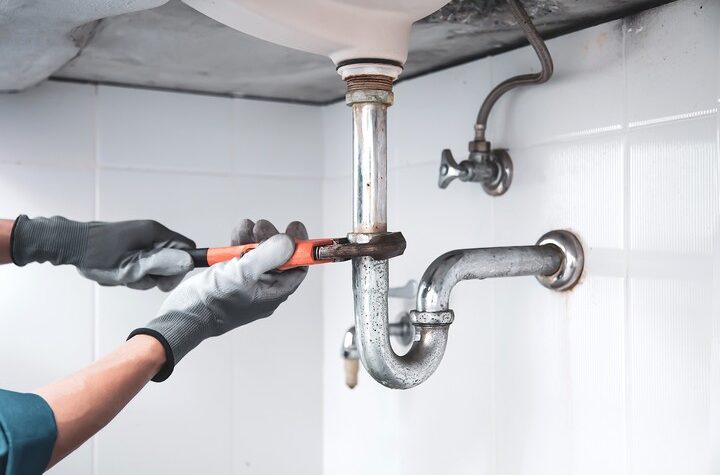A leaking kitchen sink is a common household issue that wastes water and can damage your home if left unfixed. Each leak needs attention, whether a slow drip or a constant stream. Many leaks are simple to diagnose and repair when you understand the basics.
Finding the cause of the leak is essential before starting repairs. The problem often comes from worn washers, loose connections between pipes or a cracked pipe. Quick action will keep your sink working correctly and prevent water from damaging the surrounding areas.
Here are some tips for fixing a kitchen sink leaking:
Identify the Source of the Leak

Locating the exact source of a leak requires careful inspection of all sink parts, including the tap, water supply lines and drain pipes.
Begin by shutting off the water supply and drying all surfaces around the sink. Next, turn the water on slowly and observe where water first appears. This method will show you whether the problem lies in the tap, pipe connections or drain assembly.
A thorough inspection at the start will make your repair work more efficient. Identifying the leak source ensures you fix the right problem and prevents overlooking related issues.
When to Call Plumbers

Some kitchen sink leaks need professional attention. Call a plumber when you cannot find the leak source or notice significant water damage. Professional repairs ensure correct solutions for complex problems.
Licensed plumbers own specialized tools and know how to fix difficult leaks, including those in tight spaces or issues linked to your central water system. Their skills prove valuable when dealing with persistent or returning leaks.
Professional plumbers can teach you proper sink maintenance methods to stop future problems. Finding a reliable plumber creates a valuable connection for all your plumbing needs.
Inspect and Fix the Drainpipe

Drainpipe leaks occur frequently in kitchen sinks. Look under the sink to check the drain assembly for water marks or damage. The cause is often a loose connection or damaged pipe.
Use a wrench to secure any loose drain connections. If you find cracks or holes in the pipe, a plumber’s putty or epoxy can work as a short-term solution. For lasting results, replace the damaged pipe section.
Fixing drainpipes requires more tools than basic tap repairs. Still, most people can handle these repairs with simple plumbing skills. Quick repairs will stop water damage and prevent mould growth.
Tighten Connections and Replace Washers

Loose connections often cause kitchen sink leaks. Inspect all nuts and fittings on the water supply lines and beneath the sink. Use a wrench to tighten any loose parts with care. Too much force can harm the fittings, so apply pressure gradually.
A leaking tap might signal a worn washer or O-ring needs replacement. These small parts cost little and require basic tools to change. Remove the tap with a screwdriver to find the old part. Install a new washer or O-ring that matches your tap’s specifications.
Check these components regularly as part of your sink maintenance. Well-maintained connections and fresh washers help prevent water leaks and extend your sink’s life.
Prevent Future Leaks

Regular maintenance prevents most kitchen sink leaks. Check all sink parts often, including the tap, water lines and drain pipes. Watch for rust, wear and loose fittings. Fix minor problems as soon as you spot them.
Keep grease and food waste out of your drain. These items block pipes and create pressure that leads to leaks. Put food scraps in the rubbish bin or compost.
Clean your sink parts regularly to maintain good water flow. Remove any buildup around the tap and drain. Simple care like this keeps your kitchen sink working well and prevents leaks.
Replace Worn-Out Parts Promptly

Washers, O-rings and fittings need replacement as they age. Install new parts before old ones fail to stop surprise leaks. Store basic spare parts in your home for quick repairs.
Old sinks and worn parts might need complete replacement. New plumbing materials last longer and work better than older versions.
Quality parts cost more at first but save money in the long term. They reduce repair needs and keep your sink working well for many years.




